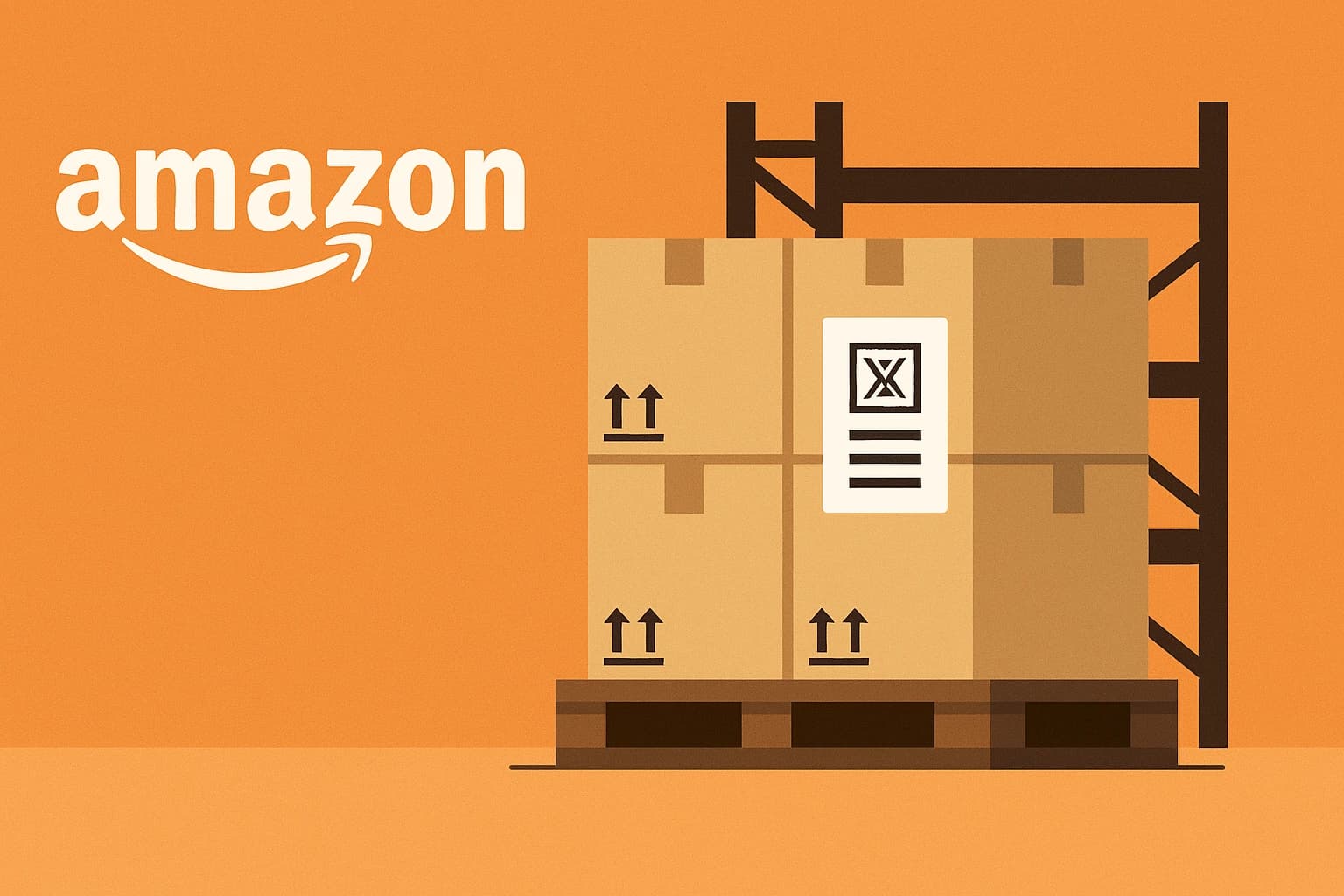Amazon Pallet Label Requirements 2025: A Compliance Guide for FBA Shipments
Introduction
Selling on Amazon brings numerous benefits, but it also comes with strict fulfillment guidelines. In 2025, when shipping inventory to Amazon's fulfillment centers via FBA, accurate pallet labeling is critical. Inaccurate or missing labels can lead to shipping delays, extra storage fees, and a decline in customer satisfaction. In this guide, we cover everything you need to know about Amazon's pallet label requirements and show you how proper labeling can streamline your processes.
"A correctly labeled pallet is the backbone of efficient order processing and cost management."
Quick Overview
- What Are Amazon Pallet Labels?
- Key Label Requirements
- Label Content
- Label Size and Format
- Label Placement
- Pallet Condition
- Step-by-Step Guide to Labeling Your Pallets
- Common Mistakes and How to Avoid Them
- Benefits of Compliance
- Tools, Resources, and Advanced Tips
- International Labeling Considerations
- Future Trends and Technology Innovations
- Final Thoughts
Understanding Amazon Pallet Labels
Pallet labels are used in Amazon's fulfillment centers to quickly identify, sort, and track your shipments. These labels include vital information such as shipment IDs, FBA tracking numbers, warehouse codes, and product details. Their scannability ensures smooth processing and efficient order fulfillment.
Key Label Requirements
Amazon's updated 2025 guidelines outline several critical standards for pallet labeling:
Label Content
Each pallet label must include:
- Shipment ID: A unique identifier for your shipment.
- FBA Tracking Number: The code assigned by Amazon to track your FBA items.
- Warehouse Code: The identifier for the destination fulfillment center.
- Product Information: Essential details about the products on the pallet.
Label Size and Format
Amazon requires labels to be printed on 8.5" x 11" sheets. They must feature a scannable barcode (usually an FNSKU) in a high-quality, durable format.
Tip: Thermal or laser printers are recommended to ensure barcode clarity.
Label Placement
For optimal scanning:
- Exterior Application: Labels must be affixed to the outside of the pallet wrap, not underneath layers.
- Visibility: Ensure the barcode faces outward so that it can be scanned without unwrapping the pallet.
Pallet Condition
Compliance with pallet dimensions and weight limits is essential. Typically, pallets should measure 48" x 40" and must not exceed 1500 lbs. Proper pallet integrity supports both safe transport and efficient label scanning.
Step-by-Step Guide to Pallet Labeling
Follow these steps to ensure your shipments comply with Amazon's FBA requirements:
1. Generate Labels via Seller Central
- Log In: Access your Amazon Seller Central account and navigate to the "Manage Inventory" section.
- Select Your Shipment: Confirm the shipment details, including shipment ID, warehouse code, and product information.
- Print Labels: Use the "Print Pallet Labels" option to generate labels formatted in PDF417 barcode standard as required for 2025.
2. Prepare Your Pallet Inventory
- Group by Shipment ID: Ensure all items on a pallet belong to the same shipment. Mixing shipment IDs is not allowed.
- Verify Details: Double-check product quantities and details against your shipment plan.
3. Print and Attach Labels
- Quality Printing: Use a thermal or laser printer to produce clear, durable labels.
- Proper Placement: Affix labels on all four sides of the pallet wrap at eye level, ensuring no labels are covered by stretch film or other packaging materials.
4. Advanced Tips for High-Volume Shipments
- Batch Printing: For large shipments, print labels in batches to save time and reduce errors.
- Automation Integration: Consider Warehouse Management System (WMS) tools to automatically generate and apply labels based on shipment data.
Common Mistakes and Best Practices
To avoid delays and fines:
- Incorrect Information: Always generate labels directly from Seller Central to ensure accuracy.
- Poor Visibility: Do not place labels where they can be obscured by packaging materials.
- Low-Quality Printing: Avoid inkjet printers that may produce smudged or fading barcodes.
Benefits of Compliant Pallet Labeling
- Accelerated Processing: Properly labeled pallets can boost order processing speeds by up to 25%.
- Cost Reduction: Accurate labeling prevents delays and extra storage fees, saving you money.
- Enhanced Seller Performance: Improved compliance leads to better seller metrics and higher customer satisfaction.
Tools, Resources, and Advanced Tips
- Label Printing Solutions: Invest in reliable printers (such as DYMO or Rollo) and label design software.
- Barcode Verification: Use scanning software to verify label quality before affixing.
- Third-Party Logistics (3PL): Outsource pallet labeling and shipment preparation to experienced 3PL providers for high-volume operations.
International Pallet Labeling Considerations
For sellers shipping internationally:
- Regional Requirements: Be aware that labels may need to be printed in local languages and comply with customs documentation standards.
- Customs Codes: Ensure your labels include necessary customs or Harmonized System (HS) codes.
- Local Regulations: Confirm that your labeling practices meet both Amazon's guidelines and local regulatory standards.
Future Trends in Pallet Labeling
- RFID Integration: RFID tags may soon replace traditional barcodes, offering faster, group scanning capabilities.
- AI-Powered Verification: Artificial intelligence can help detect labeling errors before they cause delays.
- Flexible Labeling Systems: Future-proof your operations by investing in scalable labeling technology that adapts to new compliance standards.
Final Thoughts
Accurate pallet labeling is not just a regulatory requirement—it's a strategic advantage that enhances shipping efficiency, reduces costs, and bolsters your seller metrics. By following these guidelines and leveraging the right tools, you can ensure your Amazon FBA shipments remain compliant and hassle-free.
"Investing in precise pallet labeling today sets the foundation for smoother, more efficient operations tomorrow."
Ready to elevate your Amazon fulfillment process in 2025? Implement these best practices and experience the benefits of compliant pallet labeling.
Last updated: March 7, 2025
